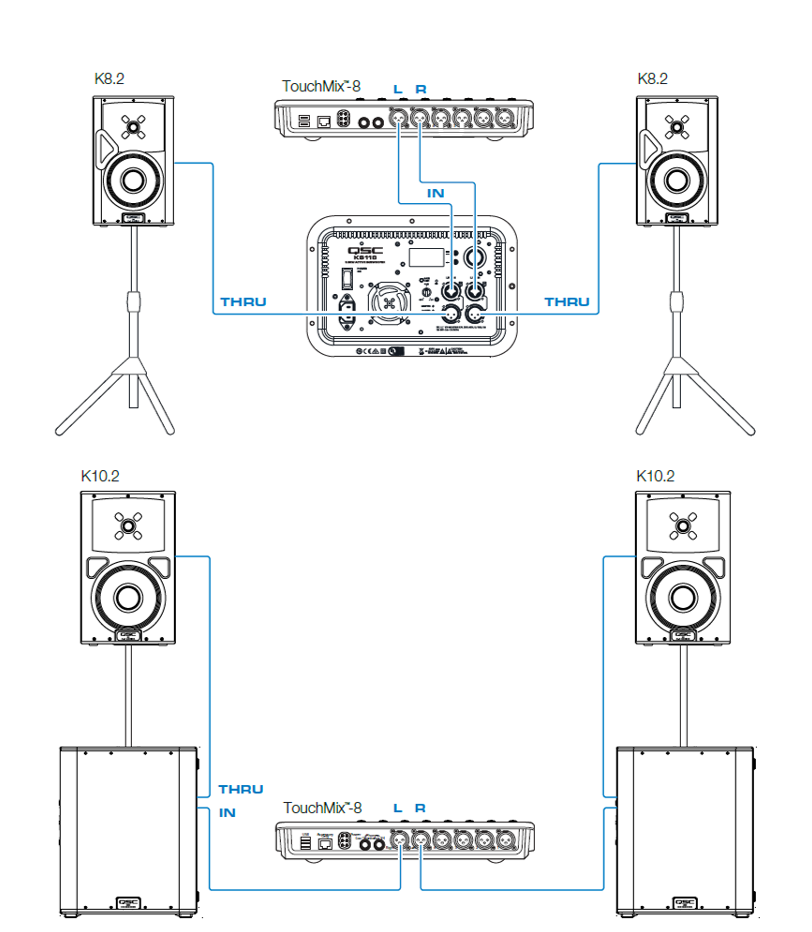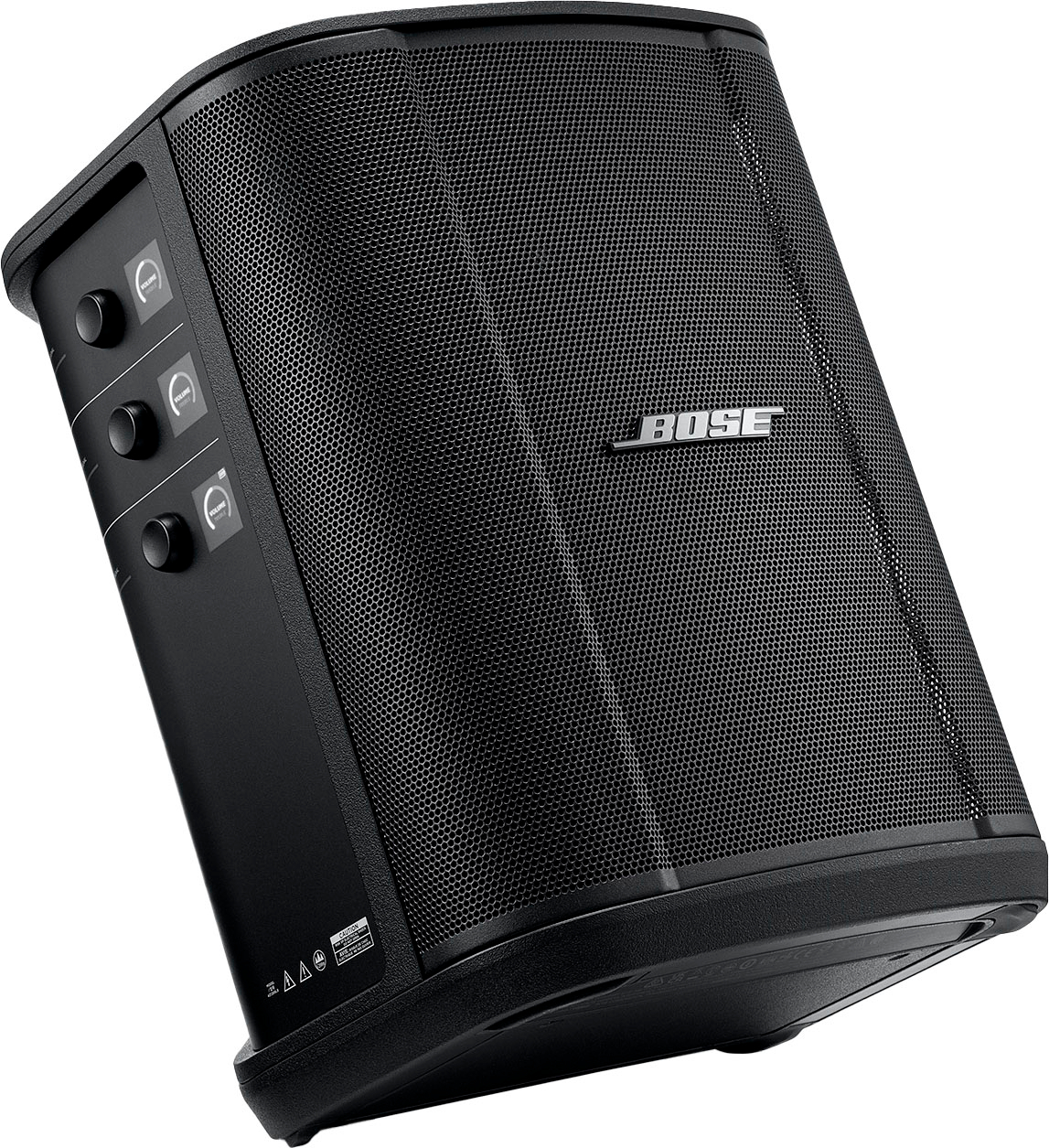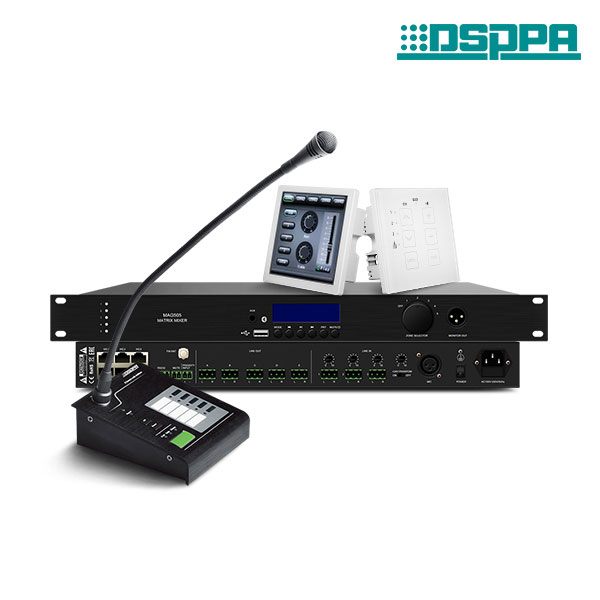Comprehensive Guide to Public Address Equipments
Public address (PA) systems are typically encountered in different tasks such as office buildings, domestic facilities, business office structures, schools, health centers, railway stations, airport terminals, bus stations, factories, and banks. This overview will provide a comprehensive review of PA systems.
Parts of a System
No matter the kind of PA system, it typically contains four almosts all: source tools, signal amplification and processing equipment, transmission lines, and speaker systems.
Source Devices
Songs Athletes: Utilized for history songs.
Microphones: Consists of zone-select microphones and basic microphones.
Voice Storage Space Devices: For storing company and emergency situation program messages.
Signal Handling and Amplification Equipment
Sound Signal Cpu: Deals with audio signal payment, attenuation, equalization, and so on.
Pre-Amplifier: Pre-amplifies audio signals.
Power Amplifier: Magnifies audio signals to drive audio speakers, offering constant voltage result.
Transmission Lines
The solution management platform software program allows the surveillance facility to exert central governance over the broadcast and intercom interaction systems. It facilitates online device condition surveillance, mistake diagnosis, and troubleshooting, solidifying system dependability and uniformity.
Speakers
Ceiling Speakers: Indoor, flush-mounted in the ceiling, constant voltage or continuous resistance.
Wall-Mounted Audio speakers: Wall-mounted, continuous voltage or consistent resistance.
Column Audio Speakers: Free-standing, appropriate for outside or interior use.
Horn Audio speakers: High level of sensitivity, suitable for outside or interior use.
Concealed Speakers: For outdoor setups like parks or gardens, designed to look like stumps, mushrooms, or rocks.
Audio Technical Requirements of Systems

In day-to-day atmospheres, typical sound stress levels are:.
• Office sound: 50-60 dB.
• Typical discussion: 65-70 dB.
• Fabric factory sound: 110-120 dB.
• Tiny caliber gunfire: 130-140 dB.
• Big jet airplane noise: 150-160 dB
Signal-to-Noise Ratio (SNR)
SNR determines the proportion of the signal voltage to sound voltage, expressed in decibels. A greater SNR shows much less sound and better audio top quality. Typically, SNR must go to least 63 dB, with high-fidelity audio speakers reaching over 110 dB.
Input Level Of Sensitivity
This is the minimum input voltage needed to accomplish the ranked result power. Higher sensitivity indicates much less input signal is required. Commonly, power amplifiers have an input level of sensitivity of 0.775 V (0 dB) to 1.5 V (+6 dB)
Optimum Result Power (Audio Speakers)
The optimum power a speaker can deal with basically ruptureds without damages.
Rated Power (Speakers)
The constant power a speaker can handle without distortion, measured in watts (W) Ranked power is a typical value, and speakers can handle peak power approximately 2-3 times the ranked power.
Consistent Voltage vs. Continuous Insusceptibility Outputs
Consistent Voltage (70V or 100V)
Uses voltage to drive audio speakers, permitting longer transmission ranges and multiple audio speakers in parallel. However, audio quality is somewhat inferior compared to constant insusceptibility systems.
Power amplifiers should match the voltage score of the speakers to avoid damages.
Consistent Insusceptibility (IP Speaker).
Uses existing to drive audio speakers, giving better sound top quality yet minimal transmission distance (approximately 100 meters)
Resistance matching is important; for instance, an 8Ω amplifier should be matched with 8Ω audio speakers
Picking and Configuring Audio Speakers
Speaker Option
Indoor Spaces with Ceiling: Usage flush-mounted ceiling audio speakers without a back cover.
Indoor Spaces with Only a Structure: Use ceiling speakers with back covers or hanging ball-type speakers.
Outdoor Locations: Use weatherproof column speakers or horn audio speakers.
Parks and Gardens: Use concealed speakers designed for visual purposes.
High-End Interiors: Usage sophisticated hanging audio speakers.
Fire-Safe Areas: Usage fire-resistant audio speakers with closed designs.
Speaker Arrangement
Speakers should be dispersed evenly across the solution location to make sure a signal-to-noise proportion of at least 15 dB. Typical background noise levels and recommended audio speaker positioning are:.
Premium office hallways: 48-52 dB.
Large shopping center: 58-63 dB.
Hectic street areas: 70-75 dB.
Audio speakers should be positioned to make sure an audio pressure degree of 80-85 dB in most environments. Ceiling speakers ought to be spaced 5-8 meters apart, or 8-12 meters for background songs only. For emergency situation broadcasts, ensure that no area is more than 15 meters from the nearby audio speaker.
Amplifier Sizing
Estimation Technique:
For solution and organization systems: P= K1 × K2 × ΣPo where:.
P = Complete amplifier output power (W)
K1= Line loss payment aspect.
K2 = Aging variable (1.2-1.4)
ΣPo = Complete power requirement.
For smoke alarm systems, make use of 1.5 times the complete variety of speakers.
Instance Computation:
For a history songs system with 10 audio speakers at 20W each: P= 1.26 × 1.2 × 10 × 20W × 0.7= 211W.
Final amplifier ability should be 1.3 times this value: 211W × 1.3= 274W
Setup Requirements
Speaker Placement
Speakers ought to be uniformly and purposefully dispersed to fulfill insurance coverage and sound top quality demands.

Tiny systems can utilize normal power outlets, while systems over 500W require a devoted power supply. Power ought to be steady, with automated voltage regulatory authorities if necessary. The power supply must be 1.5-2 times the equipment's power usage.

Use copper-core wires for signal transmission. Cable televisions must be protected and directed with ideal conduits, avoiding interference from electrical lines. Make sure correct splitting up in between power and signal lines.
Lightning Defense and Grounding
systems need appropriate grounding to protect against damage from lightning and electric disturbance. Use dedicated grounding for equipment and make certain all grounding measures meet safety standards.
Installation Quality
Wire and Adapter High Quality
Use top quality cable televisions and connectors. Ensure links are secure and correctly matched to stay clear of signal loss or disturbance.
Speaker Links
Maintain correct stage positioning between audio speakers. Usage trustworthy approaches for linking wires, such as soldering or terminal blocks, and protect links from ecological damage.
Grounding and Security Checks
Confirm all grounding is correctly mounted and examine the security of power connections and equipment setups. Carry out complete examinations before completing the installment.
Evaluating and Adjustment
Test the whole system to make certain all components function properly and meet style specifications. Change setups as needed for optimum performance.
Workmanship Needs for Public Address Solutions
Building Top Quality Requirements
The high quality of construction in a public address () system project is critical to satisfying layout specifications and user demands. As a result, it is important to strictly follow the style plans, follow requirements, avoid rework and hold-ups, and keep detailed building and construction logs. Trick locations to focus on consist of:
Cable Choice and Setup
During the construction of a PA system, interest is frequently concentrated on equipment, but the option of transmission cables is additionally essential for achieving satisfying audio quality. Top notch broadcasting tools (amplifiers, audio speakers, and so on) is essential, however the top quality of the transmission cables also affects sound top quality.
Parallel audio speaker cords have inherent capacitance in between the wires, which is not ideal for long-distance transmission as it can undermine high regularities and trigger uncertain or smothered high audios. Twisted pair cords can properly overcome this concern and needs to be utilized for long-distance transmission.
Protected twisted set wires protect against electro-magnetic interference and improve cable longevity, making them suitable for long-distance installments. The size of the cables also influences performance. Thicker cables lower transmission loss yet boost expense and installation trouble. The selection of wires must balance efficiency and expense, complying with these standards:.
Use well balanced connections for all signal links in between PA system tools, with firm endpoints.
For systems with emergency alarm functions, use flame-retardant or fireproof copper-core cable televisions.
Cords should be transmitted via steel channels or cable television trays, and should not share trays with illumination or power lines. Smoke alarm system wires should have fire defense measures. The flexing span of wires ought to be no much less than 15 times the cable diameter, and power line must be divided from signal and control cable televisions. Validate cord lengths prior to installment and match them to the design drawings, minimizing cord splices. Utilize specialized connectors and leave ample cable length at both ends with clear long-term markings. when splicing is needed.
Linking Audio Speakers and Broadcast Lines
When linking audio devices, it's critical to ensure phase consistency between speakers and program lines. Stage interference in between audio speakers can trigger significant variations in sound pressure degrees, leading to uneven sound distribution. Adhere strictly to electrical wiring tags and standard link approaches.
Three typical link techniques in PA systems are:.
Turning Approach: Stripping insulation from cables, twisting them together, and safeguarding them with tape or clamps. This approach is straightforward yet may weaken with time.
Screw Terminal Technique: Removing insulation and placing wires right into screw terminals, after that tightening the screws (IP Paging System). This method is commonly used.
Soldering Method: Removing insulation, twisting cords, and soldering them with each other, then covering with tape. This approach is a lot more ideal and trustworthy for high-demand or humid environments
Regardless of the technique, use tinned cord to help with soldering and prevent rust. Usage PVC or metal avenue to safeguard revealed cables from joint boxes to speakers.
System Grounding
To reduce interference from the power system, different protective and functional groundings should be established. Advised practice is to mount separate copper strips for weak and solid electrical systems in their particular vertical shafts.
The total grounding resistance must not exceed 1Ω.
Building Inspection
Because of the intricacy of PA systems with numerous links and components, comprehensive assessment is necessary. General evaluations must include:
Security checks of tools installment.
Confirmation of power line configurations.
Precision of discontinuations and links.
Special focus needs to be provided to device settings, such as impedance matching buttons on audio speakers. Validate that buttons are established appropriately to prevent damages. Examine the result option turns on signal source devices, settings on signal processing devices, amplifier connecting switches, and power supply settings (IP Paging System).
As soon as these steps are validated, plan for tools debugging. Considering that debugging techniques differ based on particular job requirements, they are not covered in information here
Top SPON Communications Quality Records
Certificates, technical specifications, and paperwork for audio speakers, enclosures, transformers, controllers, electrical outlets, amplifiers, audio processing equipment, secured cords, and so on
Pre-installation, covert inspection, self-inspection, and mutual evaluation records.
Records of design changes and last drawings.
Quality inspection and assessment documents for channel and cord setup.
Records of system installation and debugging.
Major Installment Requirements
Tools Installation Order
PA system equipment is typically installed in cupboards. For less complex systems, a 1.0-meter cupboard may suffice. Location regularly utilized tools like the main program controller at the top for easy access. For even more facility systems with a 2.0-meter closet, setting often made use of devices in between 0.8 to 1.5 meters for convenience.
Tools Connection Order
Link the computer to the primary program controller. Audio lines normally connect directly to the input of the preamplifier or the first network of the mixer. The mixer results are distributed to every amplifier, and if utilizing pure power amplifiers, link to the INPUT sound input. Amplifier outputs then link to addressable terminals, area control boxes, or area selectors, and lastly to the speakers.
Wiring Considerations
For considerable electrical wiring, separate audio and power lines utilizing various suppliers' cable televisions can assist prevent complication. Strategy electrical wiring ahead of time to prevent missing cable televisions, which would call for redoing the entire installation.
Power Supply

Tools Option
Do not rely entirely on appearance; think about individual testimonials and market reputation. Products from credible manufacturers with comprehensive testing and experience are generally a lot more reliable.
Wireless Microphones
For cordless microphones, pick UHF designs for much better range and signal stability. Options consist of one-to-one, one-to-two, one-to-four, or one-to-eight arrangements. For mobile use, choose headset microphones. Lavalier microphones might have poorer audio high quality and are prone to feedback.
Connection Cables
Use strong links for longevity and stay clear of counting on adapters, which can trigger loose links in time. Appropriately solder connections to ensure resilience and convenience of maintenance.
Cabinet Installment
If making use of deep power amplifiers, make sure the cabinet measurements (e.g., 600x600mm) work with the tools. Step closet deepness and spacing before installation.
Proper preparation, high-quality tools, and careful installation and upkeep are key to accomplishing ideal audio quality and reliable efficiency in a system.
Normally, SNR needs to be at least 63 dB, with high-fidelity speakers getting to over 110 dB.
Speakers must be placed to guarantee a sound pressure level of 80-85 dB in the majority of atmospheres.When attaching audio equipment, it's critical to ensure stage consistency in between audio speakers and program lines. Phase interference in between speakers can cause substantial variants in sound pressure levels, leading to unequal audio circulation. Amplifier results then attach to addressable terminals, area control boxes, or area selectors, and ultimately to the audio speakers.